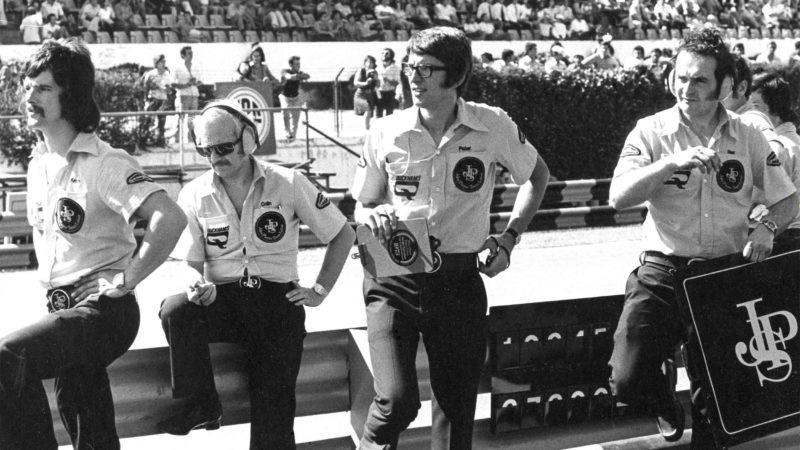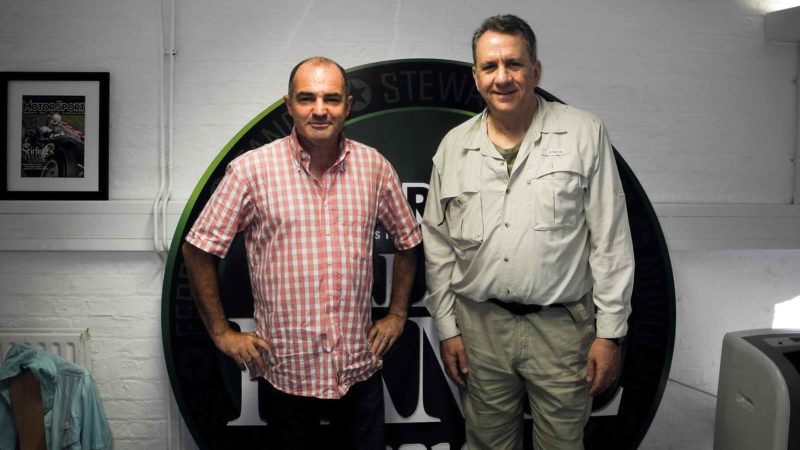Letters, February 2023
I write in response to recent letters from Rob Gent and Peter Rosier in your excellent November and December issues. Both correspondents have very succinctly highlighted the issue that has dogged Silverstone for decades and that the management team that I head has sought to address over the last six years. The root of Silverstone’s well-documented financial woes has been that it has only attracted people to the circuit on a handful of days each year.
As has been proved conclusively in the recent past, it is not possible to cover the annual costs of operating an FIA Grade 1 and FIM Grade A circuit on gate receipts from a handful of weekends a year. If it is to survive at all, Silverstone has to become more than a ‘one or two Sundays in July’ business.
The development of Escapade, the luxury short-stay development between Copse and Becketts, is a very good example of how Silverstone’s remarkable heritage and brand can be put to good use in attracting visitors to the site 12 months a year. Yes, it will be very exclusive on the second Sunday in July, but for most of the year fans and participants will be able to enjoy this stunning location. As has been experienced by early visitors to the Hilton Garden Inn, Silverstone, the long overdue improvement of facilities at our venue has much to commend it. Furthermore, that 197-bed hotel has been delivered with a net increase in grandstand seats on Hamilton Straight.

Silverstone’s improvements are helping to secure the circuit’s future, says the track chief
Grand Prix Photo
This progress – and it is progress – is far from a case of “move along motor racing enthusiast, nothing to see here…”. We have consciously created a new, additional viewing area at Stowe and at the Silverstone Festival (and from 2023 at MotoGP) all General Admission ticket holders are able to watch from a wide range of grandstands at no additional cost. I would argue that the view between Copse and Becketts has been enhanced by the removal of the raised berm as the cars are now viewed from track level which is spectacular.
Finally, we fans of motor racing need to be careful about being too rose-tinted in our view of the past – or certainly where Silverstone is concerned. For too many decades the facilities were under-invested in, the customer experience not what it should be and the business lost money. I acknowledge that change can be difficult, but I believe we are all united in wanting to see Silverstone remain viable for the enjoyment of future generations. That is what I am committed to deliver.
Stuart Pringle, Managing Director, Silverstone Circuit
To put the record straight: I refer to Mike Doodson’s article on JPS published in October [Smoke and heat]. Mike recalls some events as “…not always proper”, but I contest his memory for some of the events.
Prior to 1972, Team Lotus benefited from four years of Players sponsorship via the Gold Leaf brand at a total cost of ‘only’ £300,000. A major part of the appeal of having their cars referred to as ‘John Player Specials’ was the very substantially increased budget Players would provide to the team, but with no requirement to ‘eradicate’ the name Lotus from the team’s identity. Doodson’s description of patrolling press rooms to correct press colleagues’ referrals from Lotus to JPS is somewhat of an exaggeration. He was certainly never “instructed” to do so. Colin Chapman well exercised the description of the race cars as John Player Specials. It was the likes of Bill Boddy and Denis Jenkinson who elected not to.
Yes, Doodson was one of the first of what he describes as “a new breed of press agent” inasmuch as the style of the JPS sponsorship was all-encompassing and innovative. He may have baulked at the requirement of team uniform as he did at having the company car (purchased by Players for his use) sprayed to team colours. He argued that he did not want to be seen driving “a Players sales rep car”. But drive it he did.
Texaco’s racing fuel (a straightforward avgas of slightly higher octane than pump fuel) did not come from America but was collected from a UK store by Lotus or delivered to them by Texaco. Doodson’s description of the Clermont-Ferrand incident seems to be highly questionable.
A final major correction. The demise of Stanbury Foley Organisation took place in 1975, not late in 1973. A senior member of the SFO staff had a private business relationship with a Players executive, unknown to Barry Foley or myself and unacceptable to the client company, that saw the relationship between Players and SFO abruptly terminated. The renegade business relationship had nothing whatsoever to do with a ‘Portuguese holiday property scheme…’. SFO had no alternative but to close down, with Barry and myself liable for corporate debts that took years to deal with.
I would also like to point out that I renewed my association with Team Lotus in 1985, when employed by Peter Warr as the team’s sponsorship officer, and at a time when Players was still the team’s principal sponsor. I later took responsibility as commercial manager when Tony Rudd took the helm. I departed Team Lotus in 1990 and soon after joined Ken and Bob Tyrrell as that team’s commercial and marketing manager, a position I held until the Tyrrell family decided to sell out to Craig Pollock.
Incidentally the leading photograph, is not to the period of the article, and Eddie Dennis does not appear. The correct names are Keith Leighton (left), Chapman and Warr, and Rex Hart (right).

Did you call Lotus’s F1 cars ‘John Player Specials’? Bill Boddy and Denis Jenkinson had other ideas
Grand Prix Photo
Noel Stanbury, Moncarapacho, Portugal
All your readers will remember Simon Arron in their different ways. Having been lucky enough to first work with Simon while we were travelling together around Europe for the 1997 F3000 Championship and the FIA GT Championship, we formed a friendship that lasted. The clearest memory I treasure is of Simon’s grasp of detail of so many races that had happened even years before. Team managers and drivers across that F3000 paddock would seek him out for clarification on points they failed to remember from previous races at the same circuit!
Over the next 25 years we were often in touch. Most recently this past summer, I know Simon enjoyed the feature article he wrote on the 1962 Formula 1 race at Mallory Park [Star turn, November issue], not least in helping me track down the cars that had raced there, correcting every detail on drivers and teams. As a fellow scribe, he was delighted that Andrew Marriott produced his own first ever race report and photos taken that day in 1962.
It was a pleasure and a privilege to know Simon, and it is very hard to believe he has gone. His son Tom has handled so many messages magnificently and I am sure the whole sport wishes him and Lucy well.
Christopher Tate, Southam, Warwickshire
I wish to express my sincere condolences to the family, friends and colleagues of Simon Arron. His death has come as a big shock to me. I have been a massive fan of his work for many years, firstly through his coverage of F1 and then, in recent years, his tremendous reports from all manner of race meetings. As my interest in F1 and the larger series has diminished I grew to like his grassroots reports more and more. He walked past me a few months ago at a minor race at Oulton Park. It is my great regret that I didn’t stop him, if only to say how much I had enjoyed his work over the years. I greatly admired his style of writing and his wit and knowledge sprang out of the page or screen. The sport needs people like Simon Arron and he will be sorely missed.
Dan Hughes, Llanbedr, Denbighshire
In August 2014 I was excited and honoured as my 1978 British Grand Prix photographs were going to be published in Motor Sport as a ‘Private View’ You Were There special. Could not have been happier. During a UK visit my wife and I visited Motor Sport’s offices. The staff could not have been more open, cordial, accommodating and tolerant. We were greeted by Simon Arron and I would like to express our sincere appreciation of Simon’s kindness, the sharing of his remarkable motor sport knowledge and overall general hospitality.
As a reader of your outstanding publication it certainly was a great privilege to speak directly with Simon. He and his writing will indeed be truly missed.

USA-based Motor Sport reader Bryan M Watson , right, with our much-missed fount of racing knowledge Simon Arron
Bryan M Watson, Georgia, USA
Please receive my condolences on the death of Simon Arron, also to his children. Some years ago I had the pleasure to take Simon to the Czech Republic to visit Skoda so he could write an article for Motor Sport about the company’s history in sport. The article came out very well. Since then we were email friends. I really enjoyed his company and motor sport knowledge.
Skoda should have celebrated its 120 years in motor sport two years ago, and I had planned to invite Simon, but it all fell through because of Covid.
John Haugland, Norway
[These are just a few of the messages we have received about our friend Simon – Ed]
Your article on Lancia’s involvement in Group B [Excess all areas, December] brought back mixed memories. I was working for the Martini marketing department at the time. Attilio Bettega’s crash in 1985 had been brutal, obviously, but we still believed it was a fluke. Then only weeks later Ari Vatanen crashed his Peugeot in Argentina, followed by Joaquim Santos in 1986. Then Henri Toivonen, Sergio Cresto and Marc Surer’s co-driver Michel Wyder were all gone within a month. To make matters even worse, Martini and Lancia also competed in Group C, where we had lost Manfred Winkelhock, Stefan Bellof and Jo Gartner, all between August 1985 and June 1986. Every time we left the office on Friday we wondering who would be missing by the time we got back. I had reached the final of the Marlboro Challenge talent contest in 1986, but had to admit that I wasn’t made for this.
Jurriaan Tas, Utrecht, The Netherlands
I am currently reading Racing Legend, Eric Dymock’s biography of Jim Clark. I was too young to see Clark in action, but he was manifestly a racing driver who was also a gentleman. We have had several gentlemen in F1 since: Moss and both Hills come to mind from home-grown stock.
F1 has now said goodbye to Sebastian Vettel, who unquestionably has matured into a gentleman in recent years, having evolved into a sort of elder statesman in a way that might have been surprising a few years back.
However, in Verstappen we now have a world champion who is demonstrably far from being a gentleman. His behaviour in São Paulo showed the sport in very poor light. The rantings of dinosaurs like me are of questionable import, but Verstappen, and sportsmen who behave like him, represent poor role models for younger fans. What sort of message does it give to truculently ignore the orders of your boss and employer?
FP Smiddy, Woodbridge, Suffolk
Contact Us
Write to Motor Sport, 18-20 Rosemont Road, London, NW3 6NE or email, [email protected]
